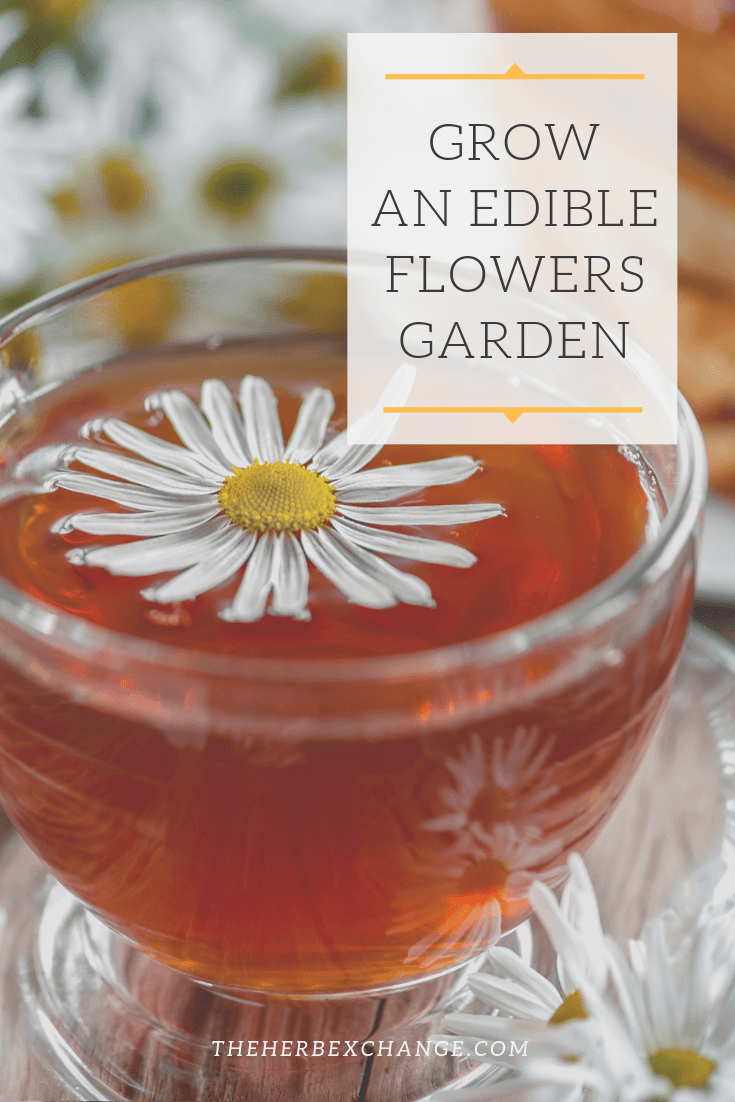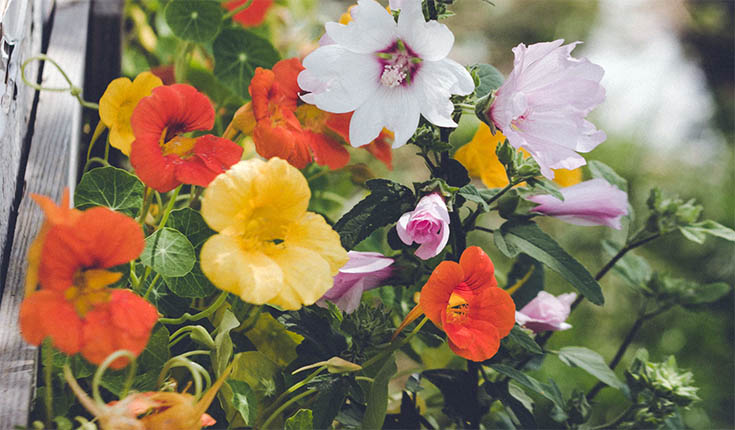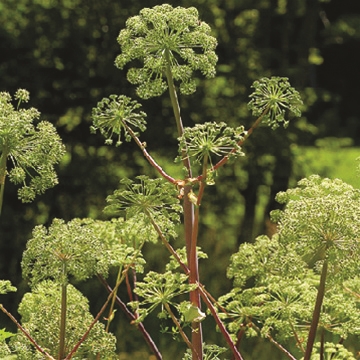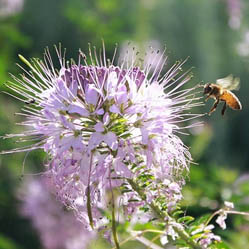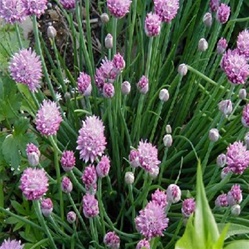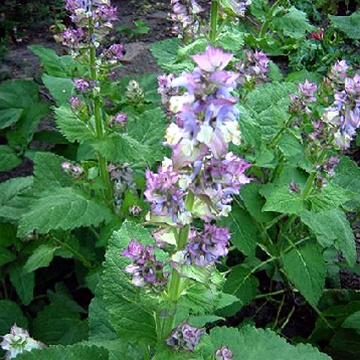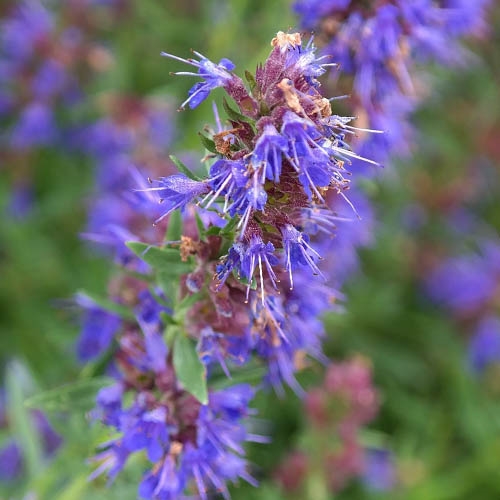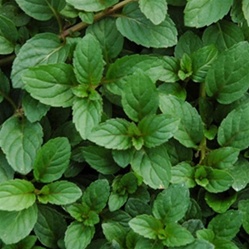Love growing vegetables and herbs, why not choose these edible flowers to grow indoors or outside? Get the most out of your garden, whether it’s an expansive garden or a few flower pots, by combining the tastiness of vegetables with the beauty of flowers. While not all flowers are edible, here are some favorite and tasty flowers that are easy to grow inside, or in your garden, for a rich and aromatic experience.
What Are Edible Flowers?
Whether cooked, steeped, or eaten raw, each of these flowers is edible. However, be cautious when eating flowers. There are many more flowers that are poisonous or inedible. Make sure you know what you’re eating. Be sure you choose an herb that hasn’t been sprayed with pesticides and appropriately prepared. Not all edible varieties are edible raw, while some are best served fresh or as a garnish to your salad.
Because most edible flowers are herbs, you can enjoy a diverse range of benefits from each plant. Many herbs and flowering plants boast particular health benefits. Always consult your doctor or herbalist before using herbs as a natural supplement.
Many flowers also provide other benefits besides culinary and medicinal, some are drought tolerant, exceptionally hardy, pleasing to bees and butterflies or varieties that are resistant to being eaten by deer.
Consider other herbs that are safe for pets. Some edible flowering plants aren’t safe for cats or dogs. Check out these plants for your pets to enjoy, or find plants that are safe for everyone in your household. Whether you’re shopping for plants that are beautiful, flavorful or both, this list of herbs and flowers is a starting point for all gardeners everywhere.
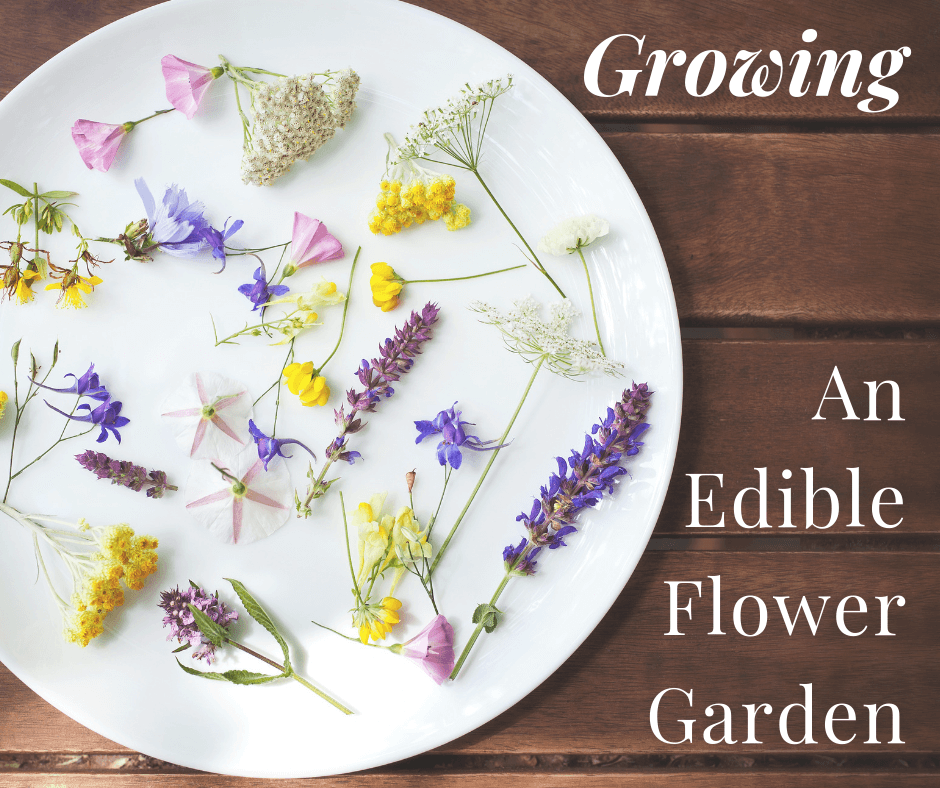
Consider Your Climate and Season When Growing Edible Flowers
Your climate can affect the types of plants that you can grow. Shop for edible flowers that are hardy in your particular climate or are capable of growing indoors or in a greenhouse. It is typically best to east flowers when young and tender. Like vegetables, the growing season of each flower may be slightly different, and some flowers will have a much shorter growing season. Choose the best flowers based on taste, growing characteristics, and aesthetic appeal. Remember, your indoor spare or flower garden can be beautiful and edible at the same time. Be sure to check whether you have the proper soil, sunlight, and water requirements for your edible flower to thrive.
Edible Flowers to Plant in a Pot, or Your Garden
Angelica
Sweet stalks and tasty leaves complement Round, beautifully chartreuse blooms. You can boil the entire stalk for use as a side dish or candy the leaves for a great dessert garnish. An elegant blend of color and clever use, Angelica is an excellent addition to your biennial garden. Be sure to give it full to partial sun and expect blooms between late spring and midsummer.
Arugula
A more familiar edible flower is arugula. This leafy green is nutritious, pleasant to look at and is low maintenance. Give your summer salad a spicy twist, or cook your arugula leaves in a delightful dish for a blast of vitamins. Arugula is an excellent source of Vitamin C and Vitamin A, as well as Potassium. During unusually hot summers, you can expect an extra blast of spice. Cooler summers produce a milder taste to this popular leafy green.
Basil
While you may already know and love this aromatic herb, you may be surprised with the wide variety of basil plants available. Basil Amethyst, Eleonora, Genovese, Lemon Sweet Dani, and Large Italian Leaf are just a few of the diverse basil offerings you can enjoy. Add basil as a fresh seasoning to meat and side dishes or create an authentic and memorable pesto from your very own basil garden.
Bergamot
Bergamot comes in many names, but this vibrant flower is an excellent combination of beautiful lavender bloom and spicy taste. The most popular use of this flower is steeped in a tea, which tastes like mint. It also has a long history of natural medicine, used by Native Americans as a wound treatment, antiseptic and even digestion aid. It’s a beautiful perennial in zones four through 10 for year after year of beauty and enjoyment.
Calendula
A gentle but potent medicinal herb. Calendula are also wonderful culinary herbs and companion plants with bright yellow, orange and gold blossoms bloom on long stalks. Often called the ‘Herb of the Sun’ it is in the same family as the chrysanthemum and sports daisy-like flowers that are packed with vitamins and potent medicinal benefits.
Chamomile
This calming flower not only makes an excellent tea, but it is also sweetly apple scented and memorably bright and cheery. It’s a picturesque perennial that is loved by butterflies and bees. Plant chamomile in partial shade and expect bright white petals to pop out between late spring and summer.
Chives
Bring out the sour cream and get ready to make a fabulous dip or spice up your entree with this popular herb. Just like onions, chives are hardy and great for use as a garnish or accent flavor. While some may only eat the green leaves, the tiny lavender-like flowers will make great garnishes.
Cilantro
Another mainstay for many chefs, cilantro leaves are popular in classic dishes around the world. You’re probably familiar with many Mexican and Asian dishes that feature this plant, so it’s an easy one to incorporate into your daily cooking. Try different parts of the plant for a variety of flavors. The seeds, roots, shoots, and leaves all play on the classic taste of this popular plant.
Clary Sage
Clary sage offers striking purple and pink flowers that bloom in late spring or early summer. This biennial thrives in zones four through nine. Clary sage has a long history of medicinal use as an antidepressant, antispasmodic, and source of estrogen. Many also use it to promote healthy digestion. Use the tops to make tasty jellies and soups, then toss the leaves in a bright and memorable salad.
Hyssop
Features striking blue or purple flowers which burst from this beautiful plant under full sun exposure. Hyssop enjoys healthy growth throughout zones 3 to 11. The fruity taste and sweet scent make it pleasant to the eye, mouth, and nose. The flowers are often enjoyed raw. The robust flavor works well as a garnish for salads or stews. Many chefs also use hyssop to create a unique character in their local honey.
Lavender
With many varieties available, choose the lavender that compliments the color and aroma of your edible flower garden. Please place them in full sun and get ready for flowers of blue, deep purple or light pink. Lavender is a beautiful scent to add to soaps and potpourris, makes a rejuvenating and calming essential oil and can also be eaten in salads and stews.
Mint
Mint is another widespread plant that has surprising diversity. The flavor and aroma of your mint can include chocolate, citrus, peppermint, orange, apple or, of course, a mojito. Citrus mint is one of the most popular for culinary use, with its zesty, citrusy flavor. You can often use it to replace lemon zest in many dishes. Grow your mint in zones 6 through 11 and expect flowers to bloom between late spring and summer. Mint makes a particularly delightful garnish for desserts, fruit salads, or fish.
Rosemary
Another culinary classic is rosemary. If you live in zones 6 through 11, you can enjoy the intense aroma and light blue blooms of this beautiful herb in your garden. Place this plant in full sun and expect flowers by spring. The piney aroma that freshens your entire home or garden also makes an excellent garnish to sauces or meat and potato dishes.
Start Your Edible Flower Pot Garden Today
These are just a few of the many flowering plants that are edible and available to grow in your home or garden. Many herb plants & edible flowers grow well indoors. Browse our full selection to find complementing aromas and colors that are available to grow in your area. Choose varieties that thrive in full sunlight, partial shade, or full shade. Find other herbs that grow indoors for a compact apartment garden or to enjoy herbs in different climate zones.
All our plants are healthy, non-GMO plants that are ready to take root. Enjoy the sights, smells, and flavors of your very own edible flower garden in the spring or fall. Fall is always our favorite time to plant! From a few flower pots on your window sill to an extensive herb garden bursting with flavor and color, we’re here to help.
